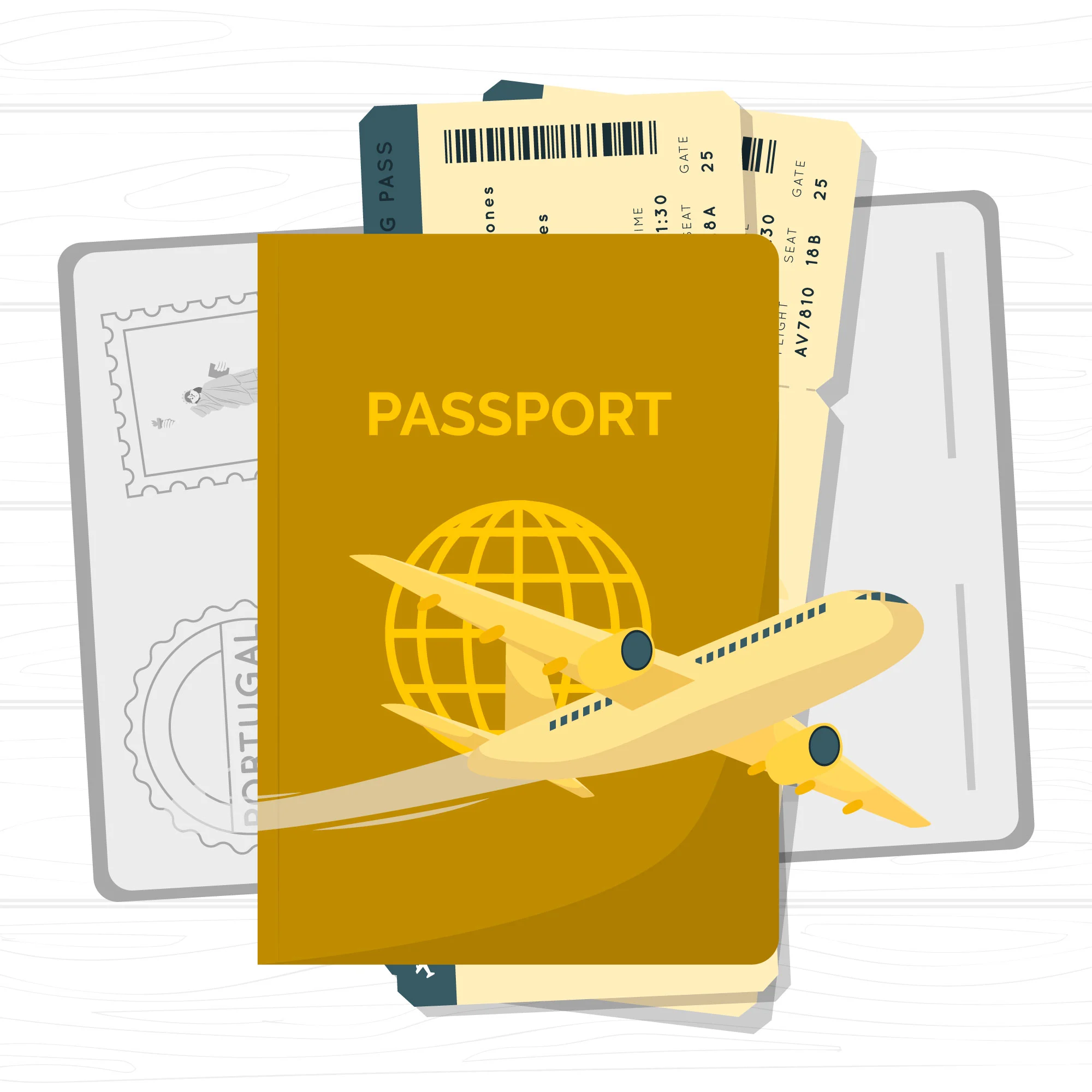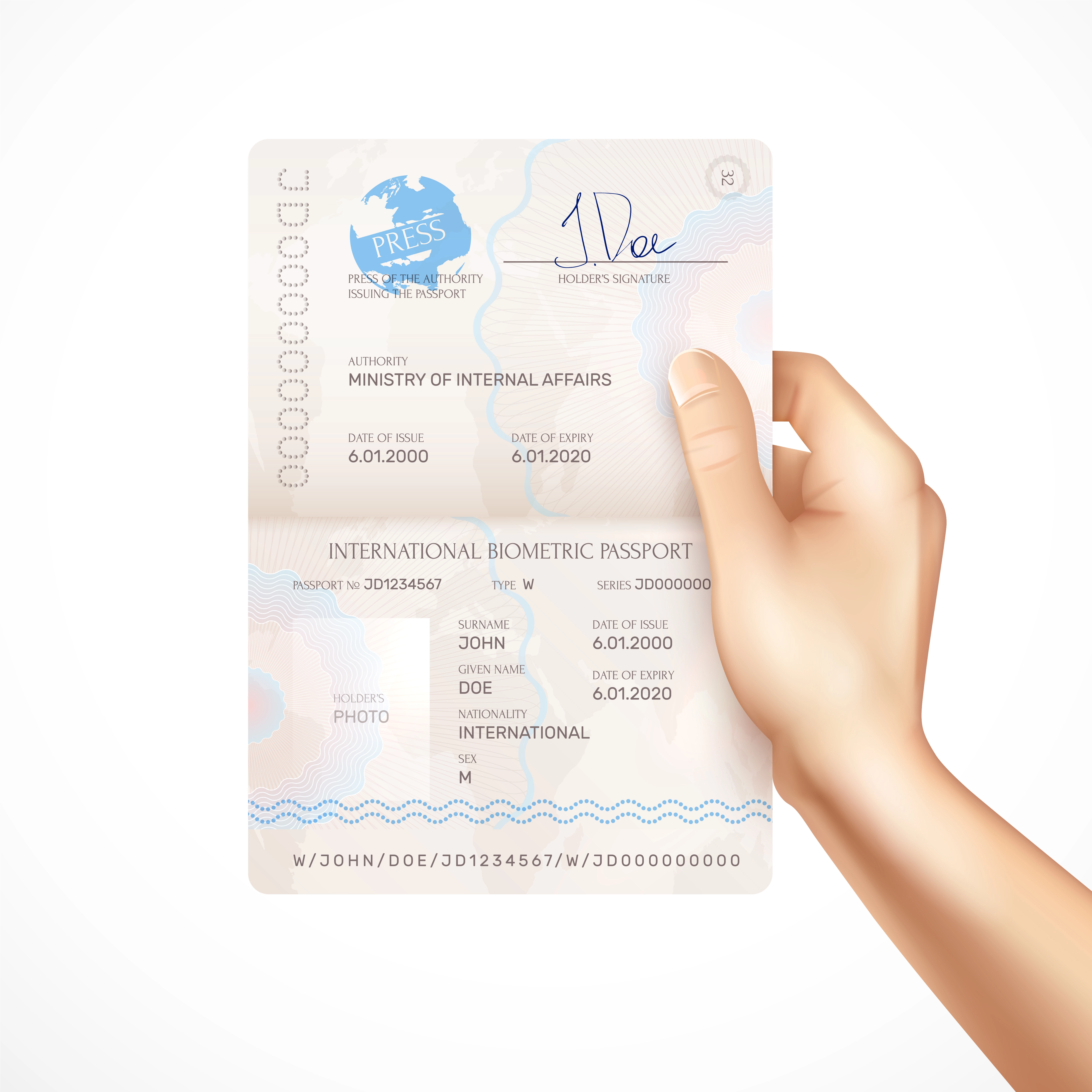The lines at the bottom of your passport, called the Machine-Readable Zone (MRZ), aren't just random symbols. This standardized code, set by the International Civil Aviation Organization (ICAO), holds your travel information for faster processing. But for most people, reading this code is difficult. That's where Machine-Readable Zone Optical Character Recognition (MRZ OCR) comes in.
MRZ OCR represents a sophisticated technological solution that utilizes a combination of image processing and character recognition techniques. Operating with precision, it first locates the designated MRZ zone within your passport. Subsequently, the technology employs advanced algorithms to decode the encoded characters, transforming them into a readily comprehensible format.

The Evolution of MRZ
In the 1960s, the need for quicker and smoother identity checks at borders became increasingly evident. This led to a revolutionary concept: the machine-readable travel document. To ensure smooth information flow between countries, the International Civil Aviation Organization (ICAO) took a critical step in 1980. They standardized the format of the Machine-Readable Zone (MRZ), a designated area on your passport. This zone typically contains two or three lines of letters and numbers encoding your passport number, name, nationality, date of birth, and expiration date. This standardization allows border control to use automated systems for fast and accurate identity verification, streamlining the process significantly.
What is MRZ OCR ?
MRZ OCR, standing for Machine-Readable Zone Optical Character Recognition, is a technology specifically designed to extract the encoded data from the designated Machine-Readable Zone (MRZ) found within your passport.
Why is MRZ OCR important?
Machine-Readable Zone Optical Character Recognition (MRZ OCR) is a game-changing technology that revolutionizes how data is extracted from passports and other identification documents. Here's why MRZ OCR is crucial:
- Faster Processing :Forget tedious manual data entry. MRZ OCR automates this process across various industries, significantly speeding things up. Imagine shorter queues at airports, borders, and anywhere passport verification is needed. This efficiency goes beyond passports. In India, for instance, PAN verification APIs that leverage OCR technology streamline processes requiring verification using the Permanent Account Number (PAN).
- Enhanced Security :Extracted MRZ data plays a vital role in secure identity verification. This helps prevent fraud by ensuring the document holder is legitimate. Border control authorities can use MRZ OCR to quickly verify traveler identities against databases, potentially expediting security checks. Similarly, PAN verification APIs can be used to confirm the authenticity of individuals during financial transactions or other situations requiring PAN verification.
- Improved Customer Experience :MRZ OCR automates data capture, streamlining processes like customer onboarding. This translates to a smoother experience for both travelers and customers who no longer need to manually enter their information. The same applies to PAN verification APIs, where automatic data extraction eliminates manual entry, creating a more positive experience.
- Data Accuracy :MRZ OCR minimizes human errors associated with manual data entry, ensuring the accuracy of captured information. This accuracy is crucial for various applications where precise data is essential. PAN verification APIs offer similar benefits, guaranteeing accurate data extraction for tasks requiring PAN verification.
In essence, MRZ OCR plays a vital role in streamlining processes, enhancing security, and improving the overall experience for individuals requiring identity verification. This technology's impact extends beyond passports, with PAN verification APIs offering similar benefits in specific regions with document-based identification systems.
Applications of MRZ OCR
MRZ OCR technology has a wide range of applications beyond travel and hospitality:
- Customer Onboarding : Financial institutions and other businesses can leverage MRZ OCR to streamline customer onboarding processes that require passport verification.
- eKYC (electronic Know Your Customer) : MRZ OCR plays a crucial role in eKYC processes, which involve verifying customer identities electronically. Extracted data from passports or ID cards can be used to confirm an individual's information against databases, streamlining secure online onboarding procedures.
- Law Enforcement : MRZ OCR can be used by law enforcement agencies to verify identities and expedite investigations.
- Travel & Hospitality : This remains a primary domain for MRZ OCR. Airports, border control stations, and hotels leverage MRZ OCR to automate data entry from passports, significantly reducing wait times and streamlining check-in processes.
- Border Control : Automated border control systems use MRZ OCR to quickly verify traveler identities.
- Government Services : Government agencies can utilize MRZ OCR to expedite citizen identification verification for various services. This can range from passport renewals to applying for social security benefits.

Future for Secure Identity Verification
Machine-Readable Zone Optical Character Recognition (MRZ OCR) has transformed how data is extracted from passports and IDs. It's not just about travel anymore! MRZ OCR benefits many industries, like verifying customer identities electronically (eKYC), checking India's Permanent Account Numbers (PAN), and confirming Emirates ID cards. As technology improves, MRZ OCR is expected to become even faster, more accurate, and more secure for identity verification across the board.
The Power of AI
The integration of Artificial Intelligence (AI) into MRZ OCR technology holds immense potential. Here's a glimpse into what the future might hold:
- Enhanced Accuracy : AI-powered algorithms can continuously learn and improve, leading to even more precise data extraction from MRZ codes. This minimizes errors and ensures the reliability of extracted information, crucial for tasks like PAN verification or secure online onboarding in eKYC procedures.
- Faster Processing Speeds: Advancements in AI can significantly accelerate data processing times. Imagine even swifter check-ins at airports using Passport Verification APIs or near-instantaneous customer onboarding experiences.
- Expanded Functionality : AI might enable MRZ OCR to recognize a wider range of document formats and identification systems, including driving licenses or voter ID cards. This would broaden the technology's applicability across various regions with diverse identification protocols, potentially leading to the development of solutions like Driving License OCR API or Voter ID Verification.
The Human Touch Remains Crucial
While AI plays a vital role in the future of MRZ OCR, human expertise will continue to be essential. Here's why:
- Security Oversight : Human oversight remains paramount for ensuring the security and integrity of sensitive data extracted through MRZ OCR, especially for applications like eKYC or government services that handle personal information.
- Regulation and Compliance : As technology evolves, regulations and compliance standards related to identity verification, like those surrounding PAN verification in India, will need to adapt. Human expertise will be crucial in navigating this dynamic landscape.
- User Experience : Ultimately, the user experience is key. Human input will be essential in ensuring that MRZ OCR technology integrates seamlessly into existing workflows and remains user-friendly for various applications, be it customer onboarding or border control.
Conclusion
The mysterious lines at the bottom of your passport hold encoded information! MRZ OCR technology reads this data, speeding up passport verification for smoother airport check-ins and faster service anywhere it's needed. As this tech evolves, expect even wider applications, making identity verification simpler across various sectors for a more secure future.